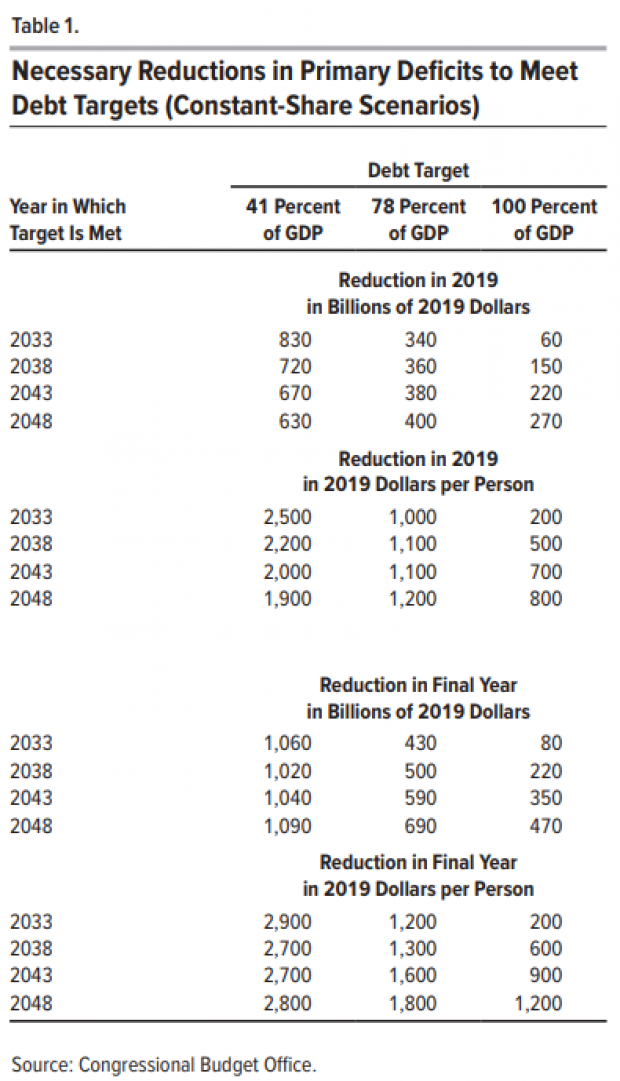You might know the numbers: The national debt now stands at $21.4 trillion, and debt held by the public — that is, debt owed to those outside the federal government — totals $15.7 trillion. As a share of the economy, the public debt is now 78 percent, compared with an average of 41 percent over the past 50 years. So the debt is large by historical standards, and rising rapidly, with deficits climbing toward $1 trillion a year and projected to stay above that level indefinitely.
But what do those big numbers mean? One way to understand them is to ask what it would take to stabilize the debt at its current level, or bring it back in line with historical averages. The Congressional Budget Office examined those questions in a report published this week.
CBO analyzed what it would take to achieve three potential targets:
- Bringing the ratio of federal debt to GDP down to its 50-year average of 41 percent
- Keeping the ratio at its current level of 78 percent
- Allowing the ratio to rise to 100 percent and then freezing it there.
The budget analysts then looked at what it would take to achieve each of those goals by 2033, 2038, 2044, and 2048.
To restore the debt to its 50-year average in 15 years would require lawmakers to cut spending and/or increase taxes by 3.9 percent of GDP annually, or $830 billion in 2019 — about $2,500 per person in the U.S. The spending cuts or tax increases would grow from there as GDP grows, reaching $1.06 trillion (in 2019 dollars) in 2033. “Anybody know a politician willing to campaign on that platform?” Howard Gleckman of the Tax Policy Center asks wryly.
OK, that’s the most aggressive scenario CBO considered, but more modest debt-reduction scenarios and longer timeframes still require some significant spending cuts or tax hikes.
If Congress wanted to get the debt to be at its current size as a share of the economy in 2033, it would have to raise taxes and/or cut spending by $340 billion next year, or about $1,000 per person, and keep those policies in place. By 2033, the tax hikes and/or spending increases would total $430 billion, or about $1,200 per person.
Bending the curve so that debt rises to 100 percent of GDP by 2033 (instead of the 105 percent currently projected by the CBO) would require a relatively modest $60 billion in deficit reduction in 2019 (or $200 per person), with that figure growing to $80 billion in 2033.
“Remember the great line from the 1970s movie Jaws: ‘You're gonna need a bigger boat!’ Well, to get out of this fiscal hole, it looks like we’re gonna need a bigger shovel,” Gleckman writes.





